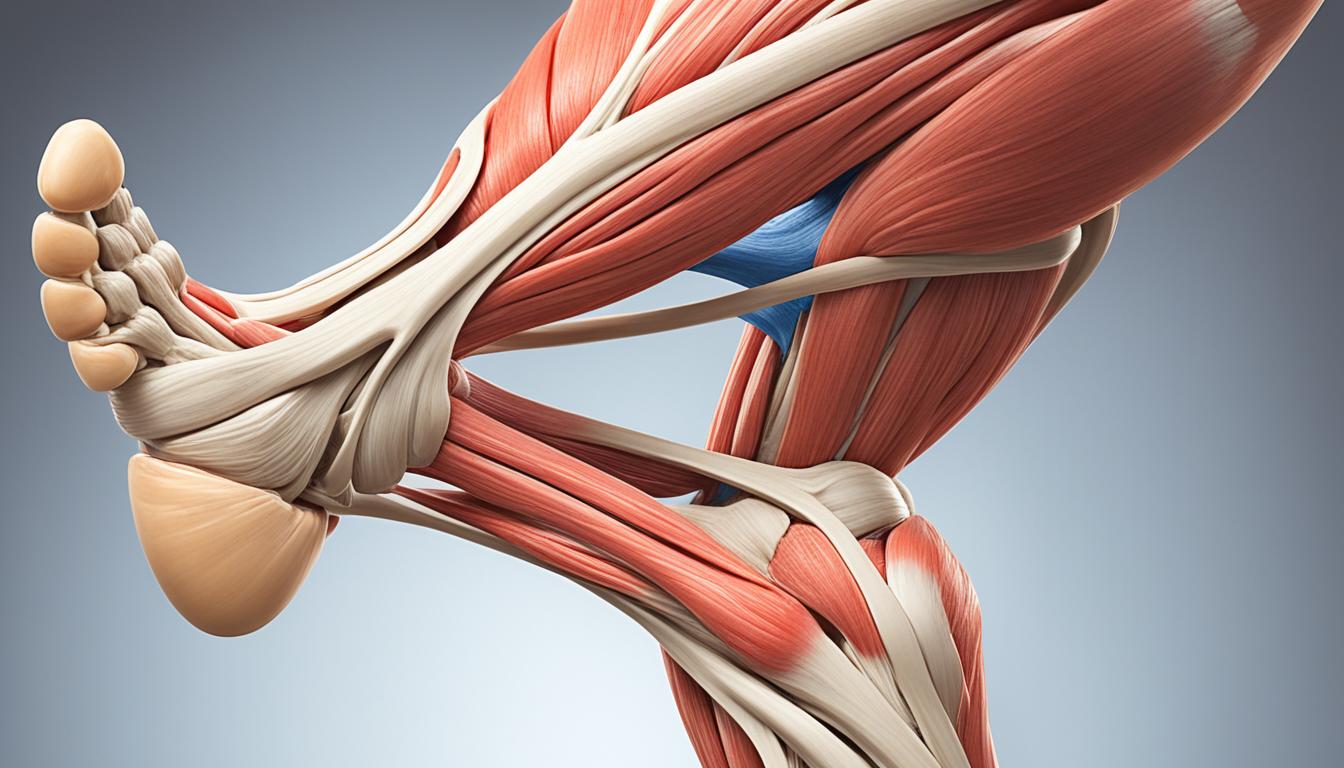Muscle cramps are common and can be very painful. They happen suddenly and can feel like a “Charley horse.” Another example is a muscle spasm that keeps happening. These cramps are often due to many reasons, including a less common one called GVHD. This can happen after a special kind of stem cell transplant.
In people with GVHD, muscle cramps are not widely understood. But one study looked at this. It showed that cramps are more common in the chronic phase. They can happen in different muscles and also cause a lot of pain. Surprisingly, the study found that nerve conditions might protect against these cramps.
The same study linked muscle cramps to possible muscle and nerve damage. Myopathy is a muscle disorder, and demyelination hurts the nerve cover. These issues might be key in why muscle cramps happen in people with GVHD.
Diagnosing muscle cramps from GVHD can be hard. They might look like other problems. Doctors could use tests like electromyography to check the muscles and nerves. Blood tests might also show some specific antibodies.
Dealing with muscle cramps in GVHD is not easy with regular methods. But new hope comes from looking into stem cell therapy. It could bring a fresh way to help with these cramps. Still, more research is necessary to get a full grasp on how to treat muscle cramps in GVHD.
Key Takeaways
- Muscle cramps can be associated with graft-versus-host disease (GVHD), which occurs after stem cell transplantation.
- In GVHD patients, muscle cramps are more frequent during the chronic phase of the disease and often affect muscles other than the calves.
- There is a negative correlation between muscle cramps and axonal polyneuropathy, indicating that other mechanisms may be involved.
- Myopathy and incipient demyelination are positively correlated with muscle cramps in GVHD patients, suggesting immune-mediated mechanisms.
- Diagnosing muscle cramps in GVHD can be challenging, but electromyography and serological studies can help with the evaluation.
- Stem cell therapy shows promise as a potential treatment for muscle cramps associated with GVHD.
The Link Between GVHD and Muscle Cramps
Graft-versus-host disease (GVHD) often happens after some types of stem cell transplants. It’s a condition where the immune system attacks parts of the body. This disease can cause issues with various body systems, like the nervous system.
One area of GVHD not studied enough is muscle cramps. A study looked at those with GVHD and found that muscle cramps were common. They happened more often in people with long-term GVHD and less in those with a certain type of nerve damage.
Some tests showed changes in the nerves and muscles of these patients. Also, some had specific signs in their blood, showing their immune system might be attacking their own body.
Looking closely at how the body’s nerves and muscles work is key to understanding GVHD muscle cramps. The body’s network of peripheral nerves links the brain and spinal cord to the rest of the body. In GVHD, these nerves can be damaged, leading to problems like muscle cramps.
EMG tests are important for diagnosing muscle cramps. It examines the electrical activity in muscles and nerves. This test can show if there’s muscle or nerve damage causing the cramps.
Doctors may treat muscle cramps in GVHD by controlling the immune system. They often use drugs like tacrolimus to calm down the immune reaction. Interestingly, patients on tacrolimus tend to have fewer muscle cramps.
Also, finding certain antibodies in the blood of people with muscle cramps could be helpful. These antibodies suggest the immune system is behind the muscle issues in GVHD.
Summary of Findings
| Findings | Implications |
|---|---|
| Muscle cramps are more frequent in chronic GVHD | Chronic GVHD may predispose individuals to muscle cramps |
| Muscle cramps are less frequent in patients with axonal neuropathy | Axonal neuropathy may have a protective effect against muscle cramps |
| Tacrolimus treatment is associated with a lower incidence of muscle cramps | Tacrolimus may be effective in managing muscle cramps |
| Electromyography reveals myopathic changes in some patients with muscle cramps | Myopathy may contribute to the development of muscle cramps |
| Increased high frequency attenuation of the tibial nerve indicates incipient demyelinating polyneuropathy | Demyelinating polyneuropathy may be involved in muscle cramps |
| Presence of antinuclear or antimitochondrial antibodies in a subset of patients with muscle cramps | Autoimmune activity may contribute to muscle cramps in GVHD |
Conclusion
Muscle cramps are a common issue with chronic GVHD. They really affect daily life and sleep quality. This can cause a lot of stress for those with this disease.
Despite the problem being well-known, finding the right treatment is hard. It’s important to keep studying to figure out the real cause. This would help in making treatments that work.
Stem cell therapy might be a breakthrough for muscle cramps in GVHD patients. Research in this area could lead to better management and an improved life quality. This new approach could be a game changer for those suffering from chronic GVHD’s muscle cramps.

